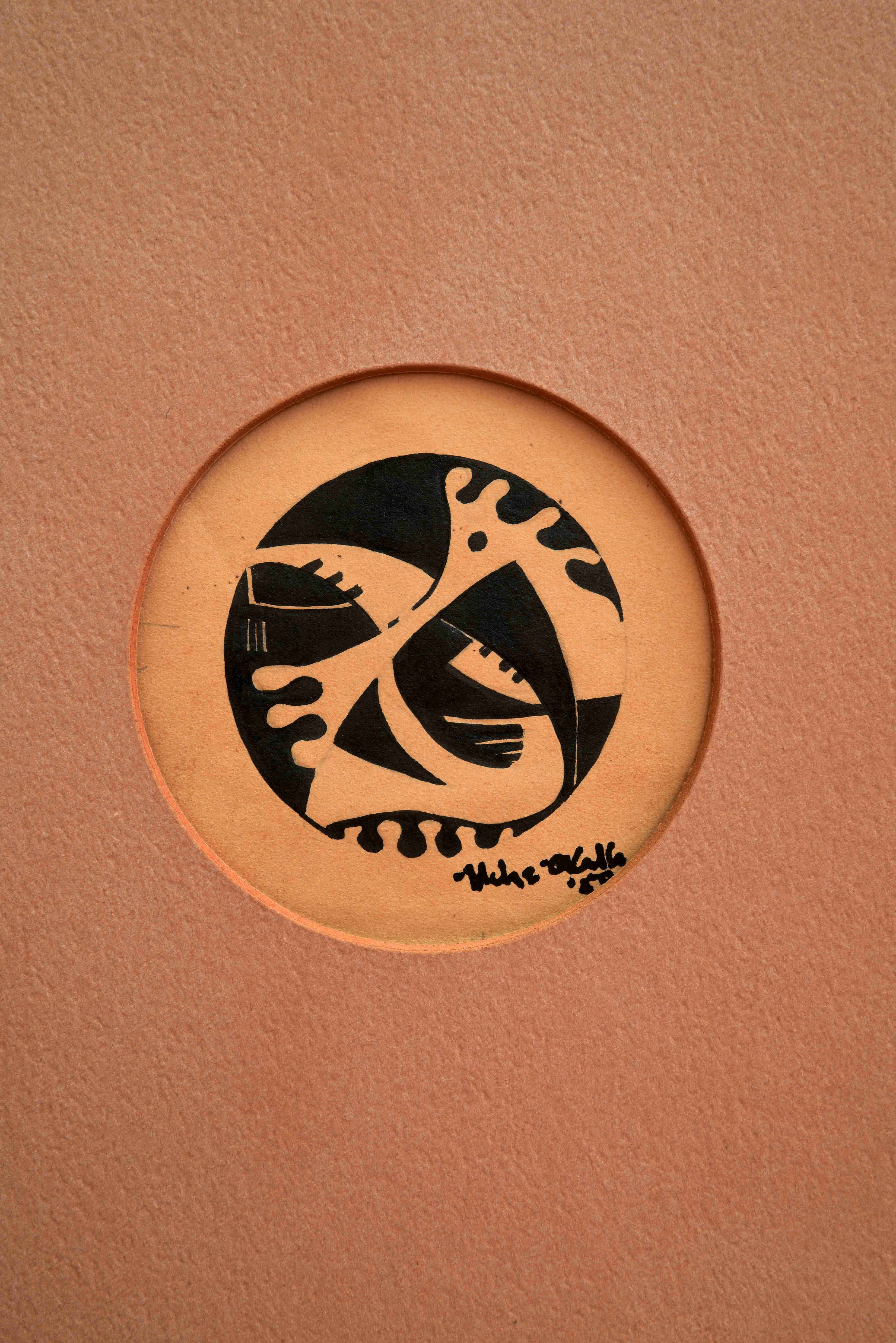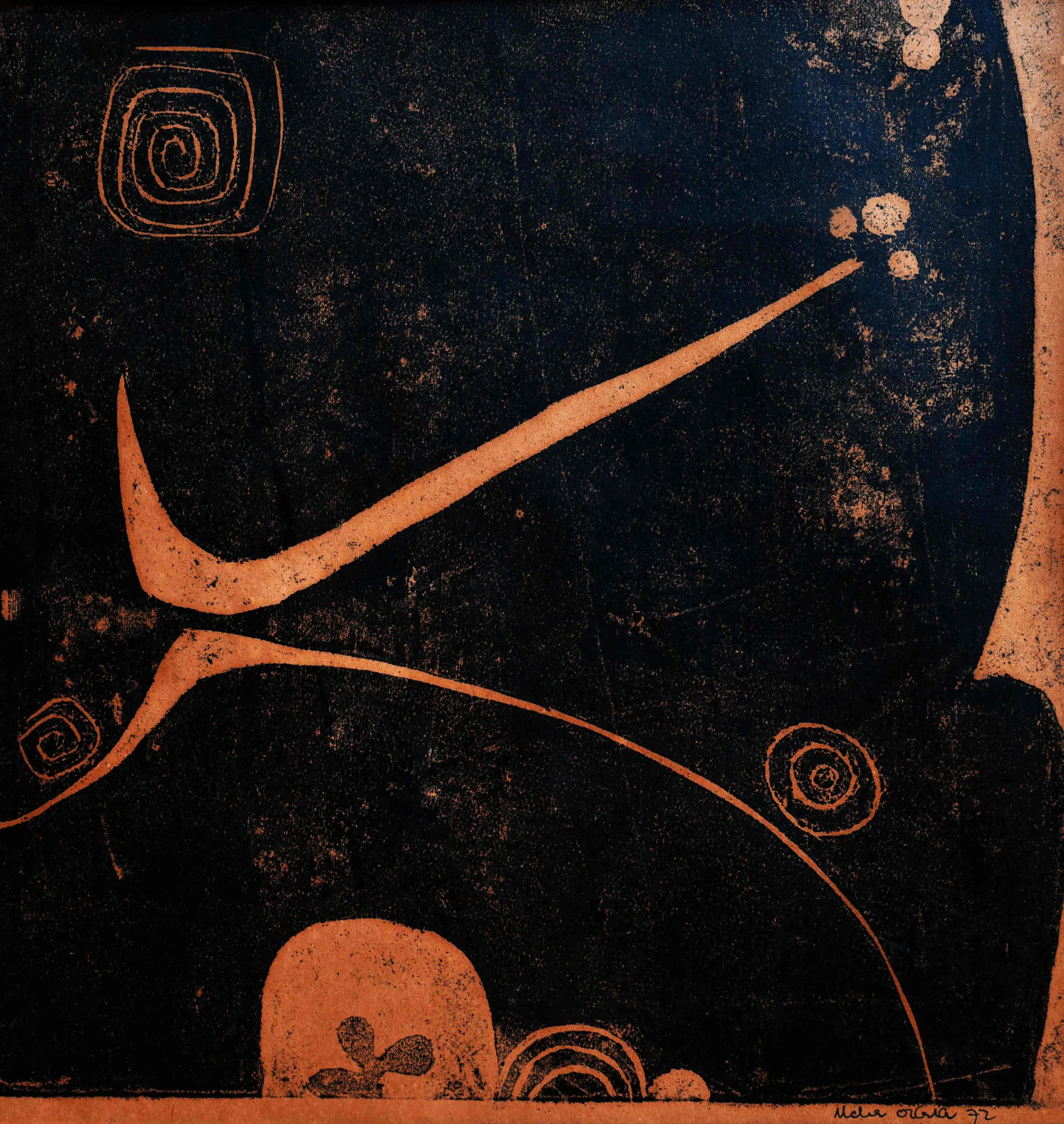Many people think that African art is sculpture only; however, there is a range of art in the contemporary field. The traditions of spontaneity are reasonably known within Africa, and in Nigeria, it is seen in the Igbo culture called Uli. The Igbo people created this artistic technique that combines the art of the past and the present. Many Igbo artists embrace and celebrate the practice; one of many is Professor and artist Christopher Uchefuna Okeke.

Image courtesy of Uche Okeke Legacy
Born in Northern Nigeria in 1933 to an Igbo family, Okeke attended the Nigerian College of Art, Science and Technology (now Ahmadu Bello University) from 1958 to 1961. Okeke’s early curiosity about the Igbo culture was whetted by his mother and at secondary school in the Igbo region. Okeke was one of the founding members of the ‘Natural Synthesis’. The name emerged as a rebellion against the notion of former British artistic training in Nigeria. It was also his style of essays on notions of Pan-Africanism and Negritude that earned the group at the University the title ‘Zaria rebels’. The resistance inspired undergraduate artists and others, and they founded the Zaria Art Society. Among these artists were Jimoh Akolo, Simon Okeke, Bruce Onobrakpeya and others with whom they fused their local heritage with Western art techniques.
From 1962 to 1963, Okeke went on to Munich, in Western Germany, to study mosaic stained glass techniques, of which he created three murals and mosaics and stained glass for Franz Meye and Company. When he returned from Munich, he worked as a publication artist at the Federal Ministry of Information.
The art of intentionality in Okeke’s artwork draws the viewer to his fascination with the mythology of the Igbo culture. These themes are depicted as paintings, sculptures and drawings while drawing in elements of the Uli technique. Okeke’s manipulation of the rigorous linearity of Uli art in his practices is done to relate to our environment. They are sometimes portrayed as drawings in simplistic forms; other times, they are seen in three-dimensional forms. Despite the surface, the art of Okeke is a reflection of his Igbo heritage, and his experimentations are a reflection of localistic art and modernism.

Image courtesy of Uche Okeke Legacy

Image courtesy of Uche Okeke Legacy
Okeke’s illustration of the second edition of Achebe’s inaugural and known novel Things Fall Apart is one of the artist’s prominent works. The collaboration for the book cover and the artwork The Conflict (After Achebe) , in which he illustrates a tale of resistance to colonisation in Nigeria. This collaboration with acclaimed author Chinua Achebe in 1963 in the painting The Conflict, shown in vivid and harsh brushstrokes fused with dramatic lighting, represents the scene from the book. Here, the character of Egwugwu (the council of masquerade judges) is seen addressing Mr Smith (the European Commissionary) standing next to his interpreter. On the book cover, Okeke depicts the narrative as a descending bird caught in what seems like a snare trap. Both artworks are visual depictions of the conflict between two cultures and rebellion against Western cultural hegemony.

Image courtesy of Uche Okeke Legacy

Image courtesy of Uche Okeke Legacy
Besides the notable collaboration with author Achebe, Okeke also designed the stage and sets for the then Eastern Nigeria Theatre for Wole Soyinka’s The Lion and The Jewel, Sam Iyamu’s Corp Diplomatique and J.P Clark’s Song of a Goat and The Masquerade. Other works include the book jacket design and cover for John Munonye’s The Only Son and for many churches such as The Holy Trinity Cathedral Onitsha. He was also the director of the Institute of African Studies at the University of Nigeria and a visiting professor at the Department of Creative Arts at the University of Port Harcourt.

The “Giant of Africa” prides itself on the life and artistic career of Professor Christopher Uchefuna Okeke. His artistry of the Igbo tales and mythic spirits renders him the Father of African ma. It’s the conservation of this incredible legacy that was undertaken by his daughters, Salma Uche-Okeke and Ijeoma Loren Uche-Okeke who has sadly since passed, under the name of Uche Okeke Legacy. In honour of Ijeoma Loren Uche-Okeke and to celebrate her birth month, Uche Okeke Legacy will be holding their first annual November panel discussion, Living Legacies: Generations Ahead, on the 23rd of November. This enlightening discussion will feature notable guest Oliver Enwonwu, Georgina Thomson and others (TBC), and will explore the joy, passion and dedication Ijeoma had for the arts, the integral role she played in conserving the phenomenal legacy of Uche Okeke, and why it is important to conserve legacies for future generations.

Written by: Horcelie Sinda Wa Mbongo
Horcelie Sinda Wa Mbongo was born in Kinshasa, Congo, she is an artist and obtained her MA in Contemporary Art at Sotheby’s Institute of Art, BA at Chelsea College of Art. She has contributed to numerous art publications across Europe and Africa. She is the founder of Lobiko, a charity based in the UK, Congo and South Africa.


